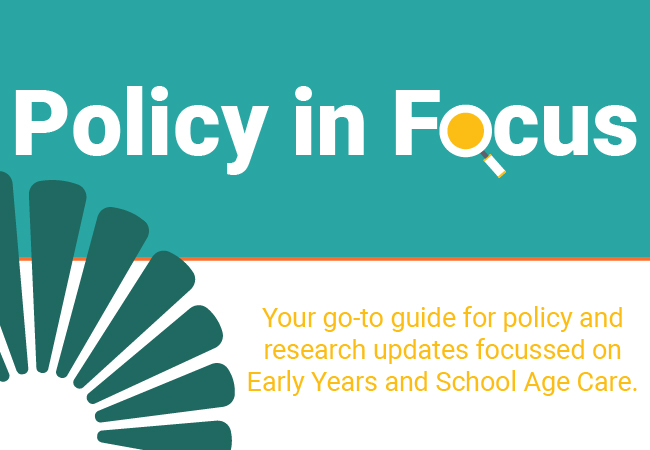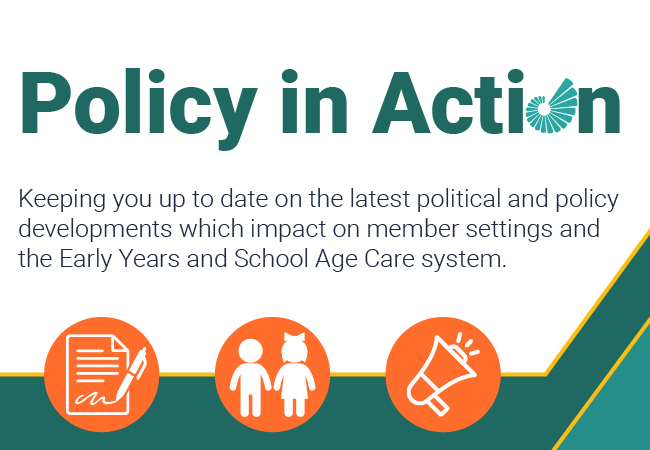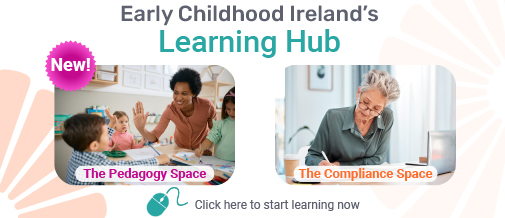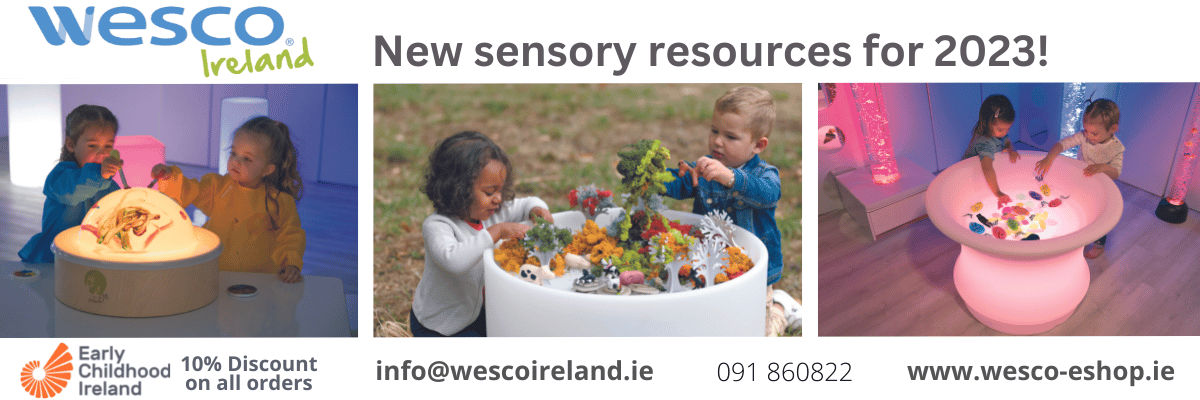Documentation – trace of your professional life
“Documentation is the trace of your professional life”.
This was a quote from Wendy Lee during her visit to Ireland last September. This quote resonated with me. It’s true. It’s the trace of our presence, our love, our care, our compassion for children and families, our willingness to constantly learn with children, and it’s a trace of our understanding. Yes, we capture the children and their lives in the years they spend with us in our care but we also, in a friendly way, explain things along the way. We know that simple conversations among children go beyond the words that are spoken. We explain the dispositions of curiosity, empathy and courage in all that we see in that conversation. We see episodes of play and recognise the ‘funds of knowledge’ that each child is bringing to it. As educators we know what we do in our everyday practice and why we do it. For this, documentation can be one of the most powerful tools we can use, not only for the children and families in our care but also to ‘trace our professional lives’.
The Early Year’s Education Focused Inspections (DES, 2016) examine four areas of practice. One area includes inspecting the quality of children’s learning experiences and achievements. Tusla, also inspect on ‘observations that inform practice’ through regulation 19 and look closely at the individual learning and development of children. Having rich documentation of children primarily for the children themselves and their families, can also be of use to showcase in an inspection, your vision, as an educator, of ‘quality learning experiences and achievements for children’.
As a mentor, in terms of assessment, I would always suggest the following for gathering the rich, exciting, adventurous stories of children while in your care.
Our Learning Journal/Group Book
This is a large blank book that is used for capturing the ‘curriculum in action’. Using this book helps you share with the children just what happened when their emerging interests developed and progressed.
For example: Harry & Molly
Last week Harry came running in to your setting with the news that he was going to be a big brother and his mam went on to have a baby girl. At the same time Sally became a big sister just three weeks ago. They both compared their stories and excitedly spread their news across the room.
You, the educator, went on to plan for this exciting, emerging interest. What happens with this is documented in a group book. This may include photographs of things that happened, conversations or quotes, art work if anything arose from it, or anything related that may be connected to this interest. This book will demonstrate your plans-in-action. This will also be a great example of the emergent curriculum you practice as the dates should link to those on your plans.
Individual Learning Journal/My Early Learning Journey
To document individual children’s learning we recommend that every child in a setting should have their own book. This tells their story. As a mentor I would often pick up an individual book and read through it wanting to know what makes this child tick. Who is their best friend, their families, favourite places to play (not just because the educator writes it, but because I see lots of examples).
This can be filled with conversations that involve this child, between the child and their friends, the child and you and even the child’s family. Invite families to contribute from time to time. What happened over the weekend perhaps or on their sleepover to their granny’s house?
It should include children’s art and the child’s interpretation of what they see in their art.
The anecdotes; those ‘you missed it’ moments that you are dying to tell your colleagues about as soon as they return to the room.
What makes them excited and happy and what funds of knowledge they demonstrate day by day.
When we focus on the here and now and become truly present for the natural happenings of children, documentation can move from a space of what we, as educators, interpret for the children, to what is actually ‘the child’. From time to time write a learning story. This can be in the form of a letter written to a child. Maybe they made their first friend after spending their first month standing back observing other children at play… write to them. Tell them you have seen them play with their new friend and how happy you are about this. Tell them all the things you feel as the skilled educator who knows that child. This will first and foremost tell the child that you are present, you heard, and you care. It also tells the parent that you want to know their child. While also affirming to inspectors that you know what you are doing. You see what is happening and you know what this means for that child. For examples of letters to children check these out here and here.
Early Childhood Ireland have developed My Early Learning Journal, which was carefully devised with 60 pages to allow for use over 2 years. The front cover has a space that children can either attach their photograph or draw their own self portrait. It is durable with a sturdy ring binder and can come at a reduced price for a pack of 11.
Remember that all children’s documentation should be situated in a place that is accessible to the children. These journals both group and individual, belong to the child/children. They are more than welcome to draw on them as they wish, in fact I personally like to see out of place ‘mark making’ as I then know they truly have free access to them.
Catherine Mc Hugh has been working as an Early Childhood Specialist for the last five years. She completed her Level 8 degree in Letterkenny IT in 2013 and a Masters of Education in NUI Maynooth, specialising in the Early Years in 2018. She has a great passion for outdoor play as she has worked in forest schools in both Ireland and Norway. She also has a grá for documentation with her most recent research focusing closely on tuning in to children’s play for richer documentation.











